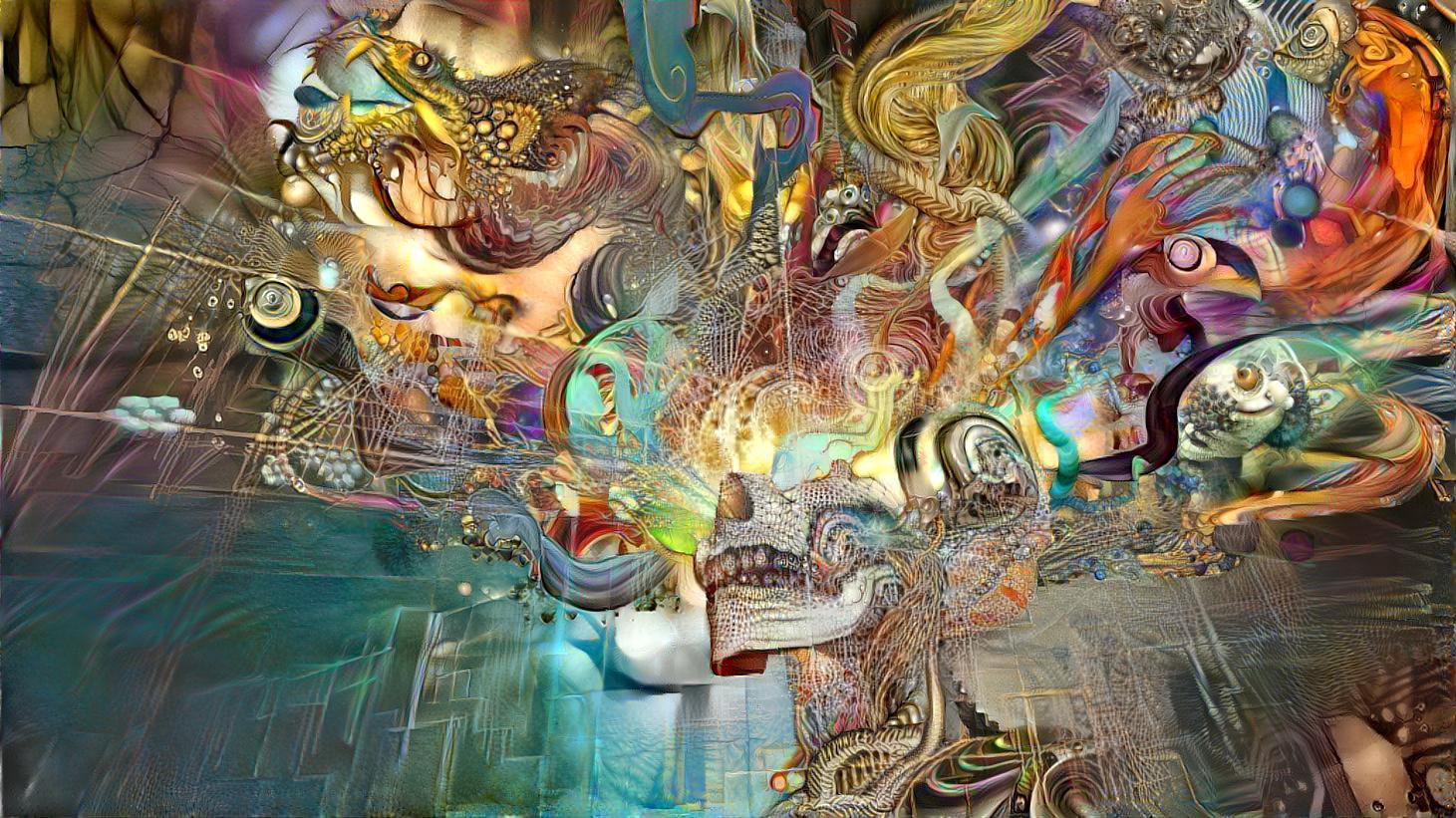In mindfulness we move from a directed to a spontaneous mode of being. ‘Directed’ is another way of talking about control – it means that we ourselves are directing ourselves to do this or do that, controlling ourselves to think this or think that. ‘Spontaneous’ on the other hand is where we allow ourselves the space just to be whatever way we’re going to be, whatever way we already are.
Awareness is in its ultimate nature a spontaneous sort of a thing – if I am being aware of a dog barking in the street I do not have to compel or direct my attention to be aware of this sound, I just am aware of it. I also to not have to direct my awareness to function as awareness – this just happens by itself because this is what awareness is in itself. Awareness always comes first; spontaneous awareness is an a priori reality – it always comes before thinking and controlling.
When we are caught up in a controlling or straining state of mind however it is apparent that the habit of controlling or straining is so deeply rooted, so thoroughly entrenched, that our naturally free awareness seems to be stuck – our attention is being compelled to go where the directing mind wants it to go, like a soldier being ordered to do this or do that by his commanding officer.
This is also like a muscle that is in a state of cramp and is not able to relax spontaneously – it just remains painfully seized up no matter what we do. In the same way when we try to relax from an anxious (or angry) state of mind our attempt to relax becomes another forced march, another exercise in ‘directing ourselves to do this or do that’. It is as if I am compelling myself to be free, or ‘ordering myself not to stop taking orders’…
It seems to be the case that nothing happens unless I strain hard to make it happen, and so I painfully strain to make myself relax, which defeats the object. Similarly, when I try to practice mindfulness by letting my awareness gently rest on something that is going on around me – or on my thoughts or on my breath for example – I discover that I am forcefully compelling my awareness to gently rest on my thoughts or on my breath, and this too defeats the object.
It is as if I am exhausting myself on a long car journey by gripping the steering wheel far too tightly –not only am I getting very tired by the constant effort this also means that I am not a very good driver! All my natural sensitivity is gone and I am driving in a crude, mechanical fashion. I’m not really paying attention – all my energy is going into gripping the steering wheel so tightly.
What becoming mindful means therefore is that I learn to loosen my grip on the steering wheel so that the journey becomes easier and less draining on me, and I become a more fluid and responsive driver. The first step in this process of becoming more mindful and less mechanical is to actually see how tightly I am gripping the steering wheel – actually seeing how tense or how controlled I am is the first step in mindfulness.
This in itself is not difficult because the pain I am in will make me aware of the tension. In the example of the man holding the wheel of the car too tightly, the pain in his arms will naturally bring the tension in his arms to his attention. We do not have to force ourselves to be aware of pain after all – our awareness of pain comes quite naturally, quite spontaneously!
It is through our awareness of the pain that we are in that we first learn to be mindful, therefore. In this way the pain that is caused by us not being mindful becomes actually useful in teaching us to be mindful. This does not mean that we have to grit our teeth and force ourselves to ‘feel the pain’ however – that would again be defeating he object! The point is that we can already feel the pain coming out of the tension – if we couldn’t feel this pain then we wouldn’t know that there was a problem in the first place.
The awareness of the pain caused by the constant straining is the same thing as the awareness of the straining, so that we can see that we are tense. This is the first step in being mindful – allowing ourselves to be aware of what we are already aware of. In this we are not fighting against ourselves – we are not struggling against ourselves. We are not desperately trying to get something to happen that isn’t happening, we’re just seeing what is happening…
The next step is to bring our attention to something in our immediate environment. Any attempt to do anything with our attention will of course of course involve straining – we are going to be ‘straining to do something different’. Directing our attention onto something is like steering the car in a different direction and so we will start off by steering heavily – we will put a lot of force into yanking the wheel to the left, or yanking the wheel to the right…
What we do to begin bringing mindfulness into the equation is therefore that we see ourselves yanking the wheel this way or that – this may not seem like much but it is the first step in moving towards spontaneity. The reason it is the first step is because becoming aware of pain or tension is a naturally occurring thing – it is a spontaneous (or non-directed) process.
Once the beginnings of spontaneity are in place – like a seed being placed in moist compost – it is possible to develop further in this direction. Growth takes place naturally, as long as we remember to water the seed. Watering the seed means ‘noticing that we are noticing stuff’ – it means being with ourselves in whatever we are doing, rather than being fixated on our goals, being fixated upon what we are trying to do.
And when we stop being with ourselves – when we stop being present with ourselves – then we notice this, we notice that we have taken our eye off the ball. This way, we are with ourselves in not being with ourselves, we are present even in our absence. We learn to be mindful not just by being mindful, but by being mindful of when we are not being mindful. Both possibilities are equally good, therefore!
It is not that one is ‘right’ and the ‘other’ wrong’ – the idea of ‘right’ and ‘wrong’ only arises out of the directed mechanical mode of being, where everything is either ‘the right way’ or ‘the wrong way’. So when we see ourselves thinking in terms of ‘right versus wrong’, this too is being mindful, this too is spontaneous awareness…
This basic practice of staying with ourselves in everything we do, and also staying with ourselves in our straying away from ourselves, is all that we need to do in order to establish mindfulness. Once we see that it doesn’t matter whether we ‘get it right’ or ‘get it wrong’ – that both are the same as far as mindfulness is concerned – then I am in the mode of being spontaneously aware.
Seeing that there is no right or wrong way is the same as seeing that there is no method to what we are doing, i.e. it is the same thing as seeing that there is no method to us ‘being in reality’.
Once we see this then we are out of the directed mode – which is another way of saying that we are free from our own controlling minds.
Therefore, seeing that there is ‘no method’ is the very same thing as being free.







Pretheesh
Kind of the simplest way to be “here” or not be in pain or not be distracted is to see my attempts or efforts to not be here or not be in pain or not be distracted. Simple is not easy though 🙂